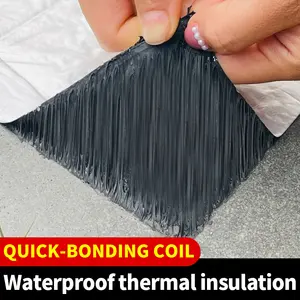

CIGS 70W-520W Flexible Thin Film Solar Panel CIGS Flexible 500W Roll Up Solar Panel For Caravans RV Roof Boat Trailer

Chinese Suppliers And Manufacturers Of SBS Waterproof Asphalt Roofing Rolls Using Asphalt Waterproof Tape























Roll roofing, also called rolled roof or rolled-out roofing, is a versatile roofing material that comes in rolls and has a place in both residential and commercial buildings. Known for its simplicity and cost-effectiveness, roll roofing offers a practical solution for low-slope or nearly flat roof designs.
As for roll roofing material, it is usually made from asphalt-integrated felt or fiberglass mats, which is a kind of material coated with asphalt or a modified bitumen that provides waterproofing and weather resistance. So some people think it’s asphalt roll roofing. The roll roofing is manufactured in rolls, which are light in weight and easy to transport and install. Compared with traditional asphalt shingles, it is usually installed in an easier way by unrolling the material onto the surface of the roof and then holding it in place with roofing nails or adhesives. Overlapping joints should be sealed with roofing cement or asphalt-based adhesives to ensure a watertight seal.
There are also roll rolling made from other materials, for example, rubber roll rolling and mineral-surfaced roll roofing, which has granules embedded on the surface, providing additional durability and UV protection. The roll roofing is rarely used for residences and other occupied structures but works well for utilitarian, functional structures like work sheds, potting sheds, shops, barns, garages, outdoor roofed exercise structures, kids' treehouses, and other outbuildings.
Roll roofing is relatively cost-effective and has become a popular choice for budget-conscious homeowners or use on outbuildings like sheds and garages. It can be installed quite easily and quickly. The user could roll out a square of mineral surface rolled roof within minutes. As for transportation, roll roofing could be transported and stored much easier than composite shingles because it’s light and tightly rolled up and sealed. The user does not need a machine or a partner for help but can move the rolls to the roof by himself. Though roll roofing is not so durable as other roofing, such as asphalt shingles or metal roofing, it is more susceptible to damage from the elements, especially in extreme weather conditions.
However, roll roofing is always in black, sometimes in white, and seldom in tan, gray, and green. It’s not suitable for people who need a colorful or bright roof. Besides, it has a shorter lifespan than traditional roofing and cannot move and shift as the house moves and shifts. Installing roll roofing is not allowed in some communities. As a result, the user needs careful planning and understanding of local rules.